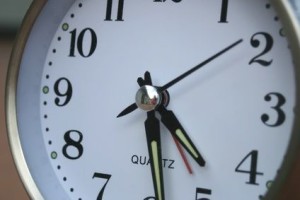 One of the most challenging concepts to teach younger children is time and money. Think about how confusing it is to their little minds: we spend all this time teaching them the worth of pennies, dimes, nickels and quarters, then switch to a clock that is split into quarters that do not equal the 25 cents we’ve just spent all that time teaching them! Not to mention how the ‘pretend money’ doesn’t really resemble the ‘real’ money we actually use. I have a few strategies that seem to make this task a bit easier.
One of the most challenging concepts to teach younger children is time and money. Think about how confusing it is to their little minds: we spend all this time teaching them the worth of pennies, dimes, nickels and quarters, then switch to a clock that is split into quarters that do not equal the 25 cents we’ve just spent all that time teaching them! Not to mention how the ‘pretend money’ doesn’t really resemble the ‘real’ money we actually use. I have a few strategies that seem to make this task a bit easier.
When teaching money, I use the real deal. Kids need to be able to actually apply what they are being taught. It’s difficult to do this with the fake money provided in so many kits. At the beginning of the year I go to the bank and get a roll each of quarters, dimes, nickels and pennies, split them up into fourths, put the money in baggies and now I have hands-on math kits to use at my tables. I use cards that I’ve either purchased at cheap flashcards, made out of index cards or recycle cards leftover from a money game that is missing pieces. With these kits, the games I can play with the kids is limitless. I always have bulletin board cut-outs posted on my reference wall to help the kids remember the name of the coin and the amount it is worth. I rank the cards from easy (coin identification), medium (making the amount of money shown on the card), to challenging ( making change from dollars). My kids love playing with these sets. They think it’s really neat to have ‘real’ money to use. I also have a shopping game that I have put together with random pieces from games and such that would have otherwise found their way into file thirteen. I’ve put prices on the items with a sharpie and the kids get to go ‘shopping’. They purchase one piece at a time and give me the money for it, then I pair them off and let them pay each other so they can each make the amounts and check the other for being correct. Again, they get to use the baggies of money. Once the kids are comfortable with purchasing one item at a time, I move to teaching them how to add the money together to purchase several items at once. Once they are comfortable with this, I take it a step further and bring in real items such as cans of green beans, bags of noodles, Kleenex and other types of real items that would actually be purchased at a store. I show the kids my receipt from purchasing these items so they see that the prices I’ve marked them with are ‘real’ prices. I feel it’s so important for kids to be able to apply the skills they’ve learned and this is a real-life application for them. The more meaningful you can make working with money, the quicker and easier it is for kids to learn and use.
As for teaching time, kids need to have a solid understanding of skip-counting by fives. I have a HUGE clock hanging on my wall at eye level for my kiddos. When I say huge, it is 24 inches in diameter. Once again, it is a REAL clock. I have center games that I have put together with the Judy brand clocks, but again, I want the kids to make the connection as to why they are learning this skill. At each five minute increment I have stapled to the wall the amount of time, skip-counting by fives. The one has ‘five minutes’ on a card stapled next to it, the two has ‘ten minutes’ on a card stapled next to it and so on. Having this available for the kids to touch makes it so much easier for them to manipulate when we are working on telling time and counting the numbers. I also let the kids use a dry erase marker, different from the color of the clock hands, on the face of the clock when I want them to show me a time. The dry erase marker comes right off and allows the kids to demonstrate elapsed time, count up to how much time there is between actual time and an activity time and for those kids who are always asking ‘how much longer’ we can draw the time on the clock and wait for the hands to line up. Another thing I will do is teach the kids how to make time using their bodies. Remember, all kids learn better when you can get them moving. The kids love playing this game. I’ll call out a time and the kids have to show the time with their bodies. This also allows me to assess who is really understanding the concept.
Teaching time and money go hand-in-hand. Get creative and get those kiddos actively involved. They will learn, and retain, these two important concepts.
How do you teach time and money in your classroom?





